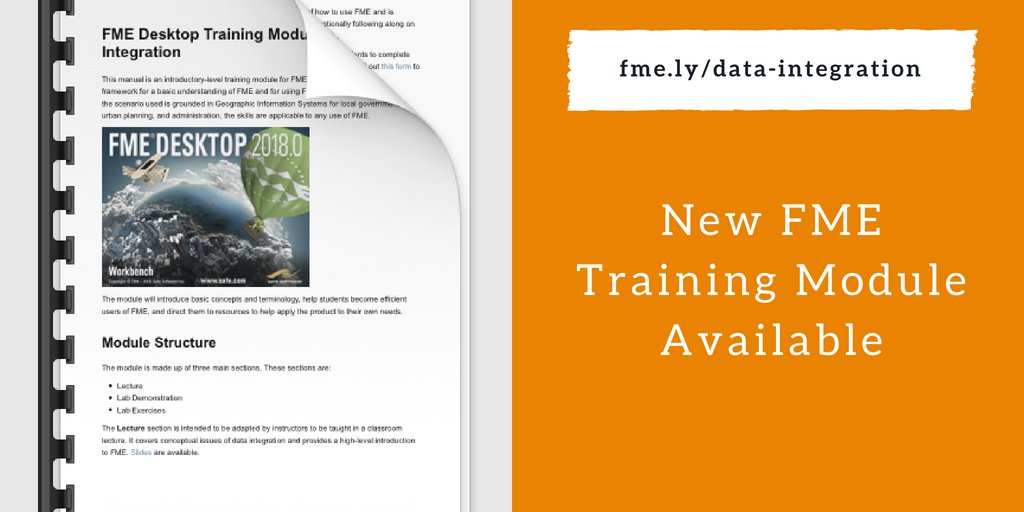Over the years, Safe Software has established strong relationships with higher education institutions like the British Columbia Institute of Technology (BCIT). Today, instructors in higher education institutions around the world teach FME. However, instructors often have to develop their own FME educational content. To address this challenge, we are now developing training content specifically for higher education classrooms.
Meeting the Demands of a Data-Driven World
Students are entering an increasingly data-driven world. Organizations and businesses require graduates who can collect, integrate, and analyze data. These skills range from basic analytics to working with big data or complex data models like BIM. FME is a robust platform for data integration. Our new training module, Data Integration with FME Desktop, helps students learn about data integration and carry it out with hands-on exercises using FME.

Visit the training module at fme.ly/data-integration
The module takes approximately 3 hours to complete. The intended audience is second-year or higher geography or GIS students, but any courses on data integration could use the module. It includes:
- a lecture on data integration and FME with slides
- a section demonstrating basic FME functionality
- instructional lab exercises
- a final scenario exercise that tasks students with creating their own data integration solution
Instructors can use the included lab questions to quiz students.
If you are an instructor or student interested in FME, or just someone interested in a medium-length introduction to FME, this module is for you. Apply for a free FME grant license or download a free 30-day trial to get started.
Feedback: What modules should we create next?
We welcome your feedback to help us improve this module and inform further ones.
Do you have ideas for higher education training for particular disciplines or data formats you think would be useful? What about ways to get students and instructors more interested in using FME? Feel free to leave your ideas in the comments or get in touch with me directly at higher-education@safe.com.
- See also: Building a Career with the FME Grant Program – How Kelly secured a job and advanced her career with the help of the FME Grant Program.

Sam Walker
Sam is the Manager of Customer Education at Safe Software. He has a background in GIS and statistics and completed his Ph.D. doing research on urban environments.



